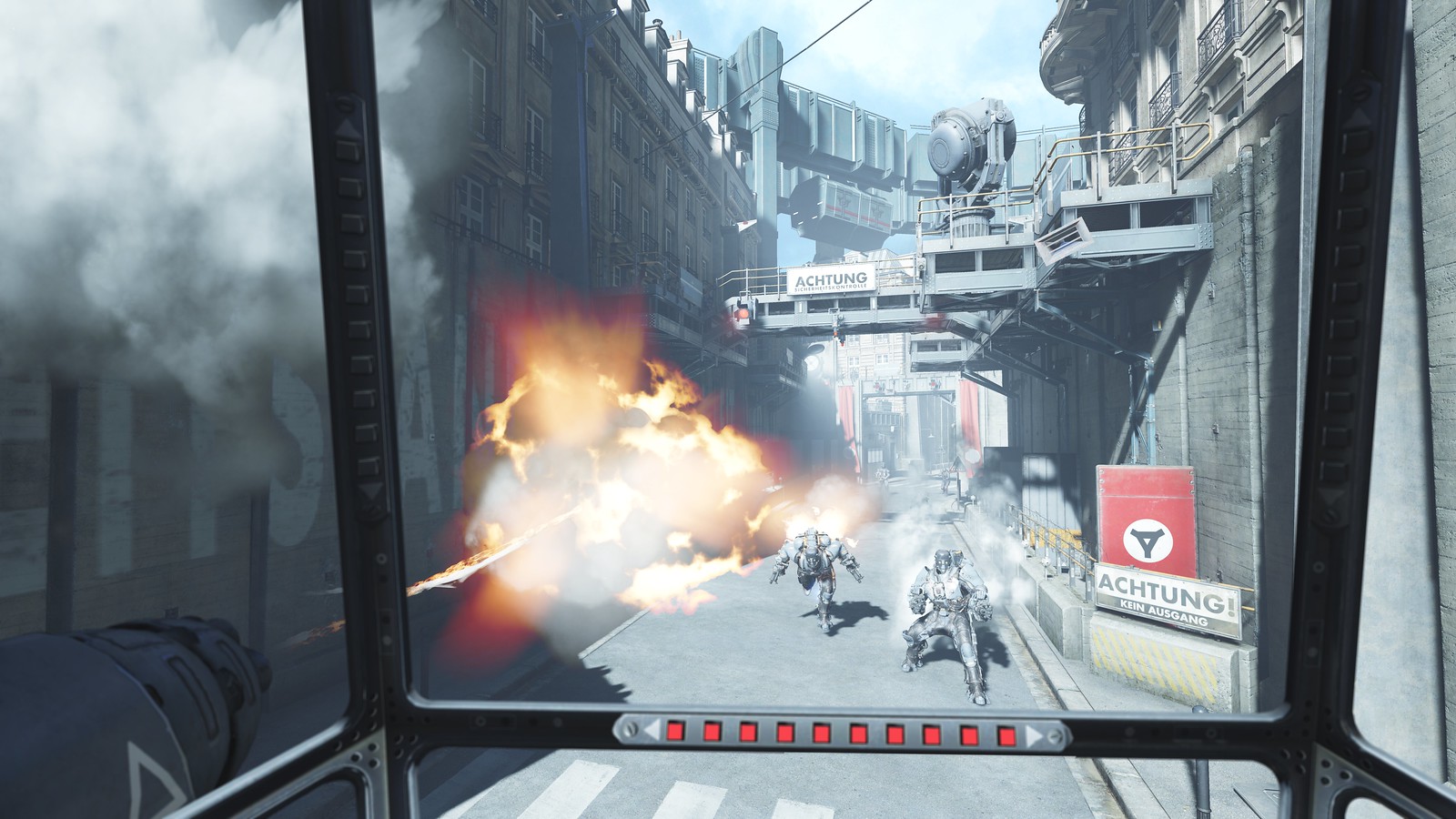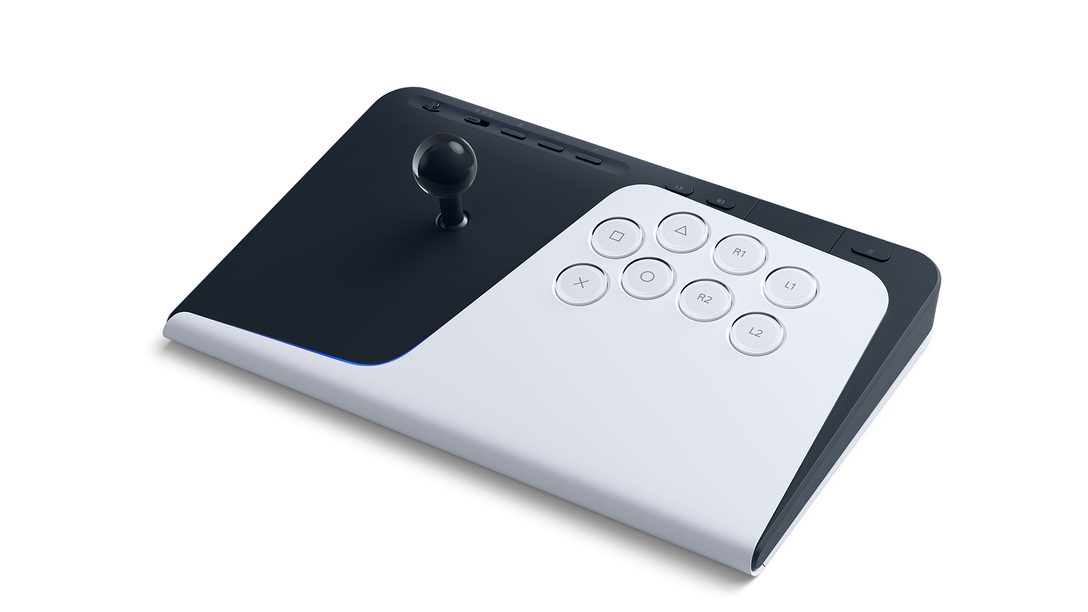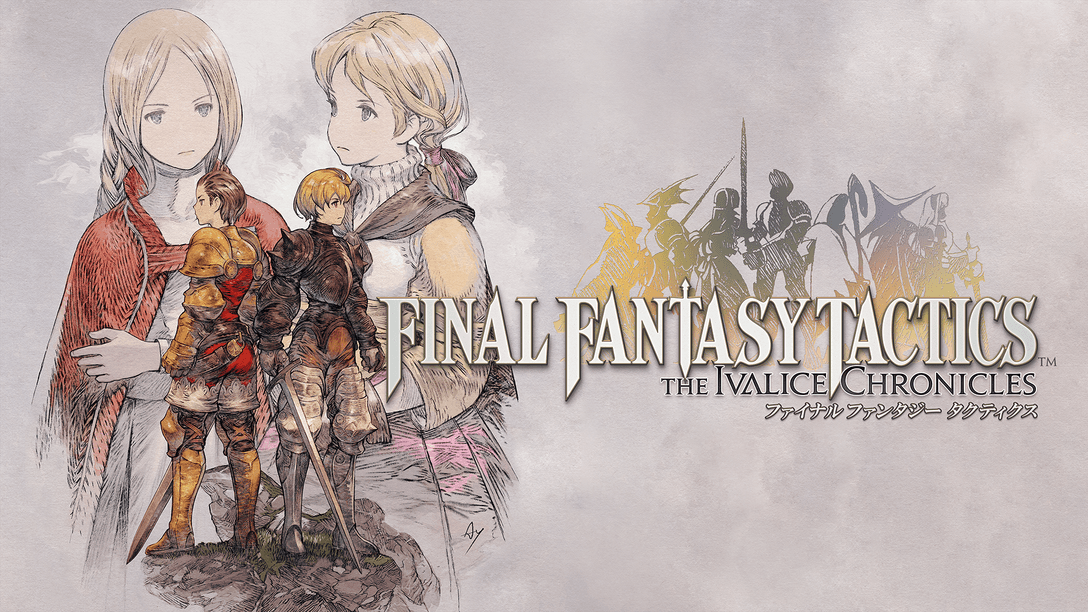
Find out how the FPS series translates to VR in this companion story to Youngblood
Rampage through the streets of Paris from the comfort of your PlayStation VR headset as you take on Nazis in Wolfenstein: Cyberpilot. This marks the series’ first foray into virtual reality, and it’s borne from a collaboration between MachineGames and Arkane Lyon, who partnered to ensure the experience is smooth, immersive, and most importantly, distinctly Wolfenstein.
Both Wolfenstein: Cyberpilot and Wolfenstein: Youngblood launch on PlayStation 4 on 26th July. Cyberpilot is a VR exclusive title.
Why make a Wolfenstein VR title, and why make it a standalone story?
Dinga Bakaba, Game Director at Arkane Lyon: When we started to talk to Jerk [Gustafsson, Executive Producer at MachineGames] about a Wolfenstein VR title, we were thrilled as we have several big enthusiasts in the studio.
We quickly concluded that it should be a companion game and not just a VR mode for Youngblood, as trying to emulate the gameplay of the main Wolfenstein games wouldn’t be fitting for this format. It’s the inherent feeling that it was basically a different game that gave the project legs, and made us start adding new, unique concepts and story elements.
Were there any specific challenges in making something new and different, but still distinctly Wolfenstein?
Dinga: Again, the specificities of VR were huge in a lot of our discussions. We were certain we wanted to play with rail-free, first-person shooting with direct control over your movement, but we also considered the fact that some of the most comfortable VR experiences are seated.
That made us come up with the idea of the robots: you sit as the Cyberpilot in your retro-futurist “hacking post” and take control of remote war machines to roast, electrocute, gib and sometimes simply just shoot Nazis in a “VR in VR” kind of way. It’s a type of madness that we feel is distinctly part of the Wolfenstein brand.
Alexander Leboucher, Game Designer at Arkane Lyon: We tried to match the intensity of the flagship Wolfenstein combat while adapting the speed of mobility due to the specificities of VR. It was a daunting challenge since free movement often induces motion sickness.
The good news is that, after countless hours of tweaking and experimenting, we managed to deliver a smooth free-roaming experience! Having access to MachineGames’s code base of gameplay systems and resources helped tremendously in providing that seamless Wolfenstein experience.
What do you think defines the Wolfenstein DNA and how have you translated that into VR?
Dinga: I grew up with Wolfenstein, I played Wolfenstein 3D as a kid (not recommended for kids, but you know, it happened) and it is one of the most influential games in my life. And through its various iterations over the years, the common strain of DNA is the cathartic killing of a lot of Nazi scum with heavy weapons in first-person. That is what Cyberpilot is all about. I mean, it doesn’t get much heavier than a Zitadelle!
But one remarkable element that Wolfenstein: The New Order brought to the series is the strong story, tone and characters, and it was important to not only be aesthetically connected to the newest chapter in the series (Youngblood), but also have a narrative component that gives context and weight to the simple joy of obliterating Nazis. And in this case, with the VR format, we chose to approach it without cutscenes by putting you at the center of the events.
Beyond sharing a launch day, is there a connection between Wolfenstein: Cyberpilot and Wolfenstein: Youngblood?
Dinga: Yes indeed. Cyberpilot actually takes place not long before the events of Youngblood. It doesn’t focus on the Blazkowicz family, but some characters do cross over between both games.
Sophie Mallinson, Narrative Designer at Arkane Lyon: And for fans of Wolfenstein II: The New Colossus, there will be a familiar voice in your ear helping you throughout your journey in Cyberpilot.
In Cyberpilot you play a hacker (aptly referred to solely as “Cyberpilot”), but what does that actually mean? How does it translate to gameplay?
Yoann Guilloud (AKA YoYo), Producer at Arkane Lyon: The Cyberpilot is remotely operating the robots from an advanced technical chair hidden in one of the Resistance’s secret bases of operations in Paris.
While in the chair, you’ll interact with the world by controlling mechanical arms or other devices around the chair (yes, you can play Cyberpilot in VR entirely from the comfort of your chair). You’ll receive your objectives through speakers in this chair and there will be a monitor on your left to give you some complementary information.
Sophie: While the focus in Cyberpilot is (obviously) on completely obliterating Nazis, we wanted to add a little variety to the series’ gameplay and complement that with an interesting storyline. In the hub you’ll be able to have some more peaceful moments between missions, fixing and hacking into various machines.
Alex: In each mission, you’ll be able to rampage through Nazi-infested Paris in one of three hackable Nazi machines — an imposing, fire-spewing Panzerhund; a stealthy Drone; or a towering Zitadelle. Every mission requires a specific robot, and each level you play will be designed with that robot’s abilities in mind to maximize immersion. A tool for every job.
In addition to your own piloting skills, you’ll be relying on your robot’s weapons, a repair system when you find yourself taking damage, and a special move unique to each robot that is enabled when you smash a panic button accessible in the cockpit. When you find yourself in trouble, hit that button like it’s your alarm clock in the morning, and bask in the soon-to-be-dead Nazis’ embarrassment.
How has the partnership between MachineGames and Arkane Lyon worked for this project?
Jerk Gustafsson, Executive Producer at MachineGames: One of the great benefits of being part of the ZeniMax family is the relationship you develop over time between your sister-studio teams around the world. Arkane Studios Lyon and MachineGames have the additional benefit of operating within the same time zone, and as two European studios we also share many cultural similarities.
After the release of Dishonored: Death of the Outsider and Wolfenstein II: The New Colossus, we were given this opportunity to collaborate — a truly great opportunity that would allow us not only to draw learnings from each other, but also to broaden our respective expertise with gaming experiences outside of our comfort zones. Cooperative gameplay with Youngblood and virtual reality with Cyberpilot, for example.
While the latter has been primarily developed at Arkane Lyon, both of our teams have been well-integrated in the combined efforts of developing both of these games. This means all aspects of game development from start to finish — from production and design, to content and code. And as the collaboration on these two Wolfenstein titles is now coming to an end, we will always be there to support each other, regardless of what project each studio will be working on in the future.














Join the Conversation
Add a CommentBut don't be a jerk!